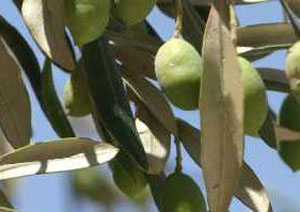Olive leaves, a good alternative to save on feed costs

As parts of Queensland’s South Burnett region are approaching drought, one cattle farmer has found an effective and original way of feeding his stock, using olive leaves.
The chemical composition and nutritive value of olive leaves depend on their process of obtention (cleaning or pruning) and on the amount of woody material they contain. Olive leaves are characterised by a high level of fibre (NDF is about 40-60 % DM) and lignin (15-28 % DM). The moisture level of green leaves starts at about 45-50 % and decreases rapidly when the leaves are left to dry and are protected from rain.
Olive leaves and twigs are a suitable forage for ruminants as a bulky feed in maintenance and low-production systems. They are rich in long fibres and require nitrogen and phosphorus supplementation. Leaves treated with copper-based fungicides should not be given to sheep. In dairy cattle, ensiling and partial drying decrease bitterness and improve palatability, but total dehydration results in a decrease of palatability.
Ron Hanson, from Bindaree Brangus, north of Murgon, has sent one fifth of his cattle north to the Central Highlands to save on feed costs. But the cattle he’s keeping on are enjoying the unexpected spoils of an abandoned olive grove.
Could olive leaves be a good alternative?
Olive by-products are commonly fed to livestock, olive forage is relished by cattle, sheep, goats and can be browsed by livestock or cut and brought fresh to livestock after pruning.











